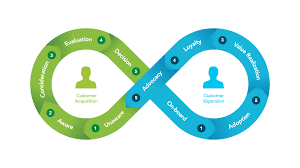How Does the TPG Loop Foster a Culture of Revenue Accountability?
The Loop operationalizes accountability: one metric dictionary, SLA-driven handoffs, governed attribution, and an executive scorecard that leaders use to fund what works.
TPG’s Loop makes revenue accountability a daily habit by defining a shared metric dictionary, locking one executive attribution model for sourced revenue, showing influence via associations, and enforcing SLA handoffs. Role-based dashboards feed a single executive scorecard that the revenue council reviews monthly—so priorities, funding, and compensation align to the same revenue outcomes.
The Loop Turns Data Into Decisions

Accountability Building Blocks
How the Culture Takes Hold
Accountability starts with clarity. The metric dictionary and naming standard define stages, lookbacks, and UTMs so dashboards reconcile. Original-source and date fields are protected, and every asset—ads, pages, emails, CTAs, sequences—is associated to a campaign. That instrumentation makes results traceable to the plays that produced them.
Next, accountability becomes coachable through SLAs. Marketing commits to qualified demand; sales commits to first-touch, acceptance, and accurate dispositions. Standard rejection and loss reasons power recycle paths and enablement. Because playbooks mirror campaigns, prospects hear consistent proof at each stage.
Finally, accountability is enforced by the scorecard. Sourced revenue uses one executive attribution model; influence is shown via associations with an overlap view to prevent double counting. Role-based dashboards explain the “why,” while the revenue council uses the scorecard to issue start/stop/scale decisions and reallocate budget—so incentives follow evidence, not opinions.
Frequently Asked Questions
Run the Revenue Accountability Playbook
We’ll stand up your metric dictionary, SLAs, attribution model, and executive scorecard—then coach the revenue council to make decisions that stick.
Talk to an Architect